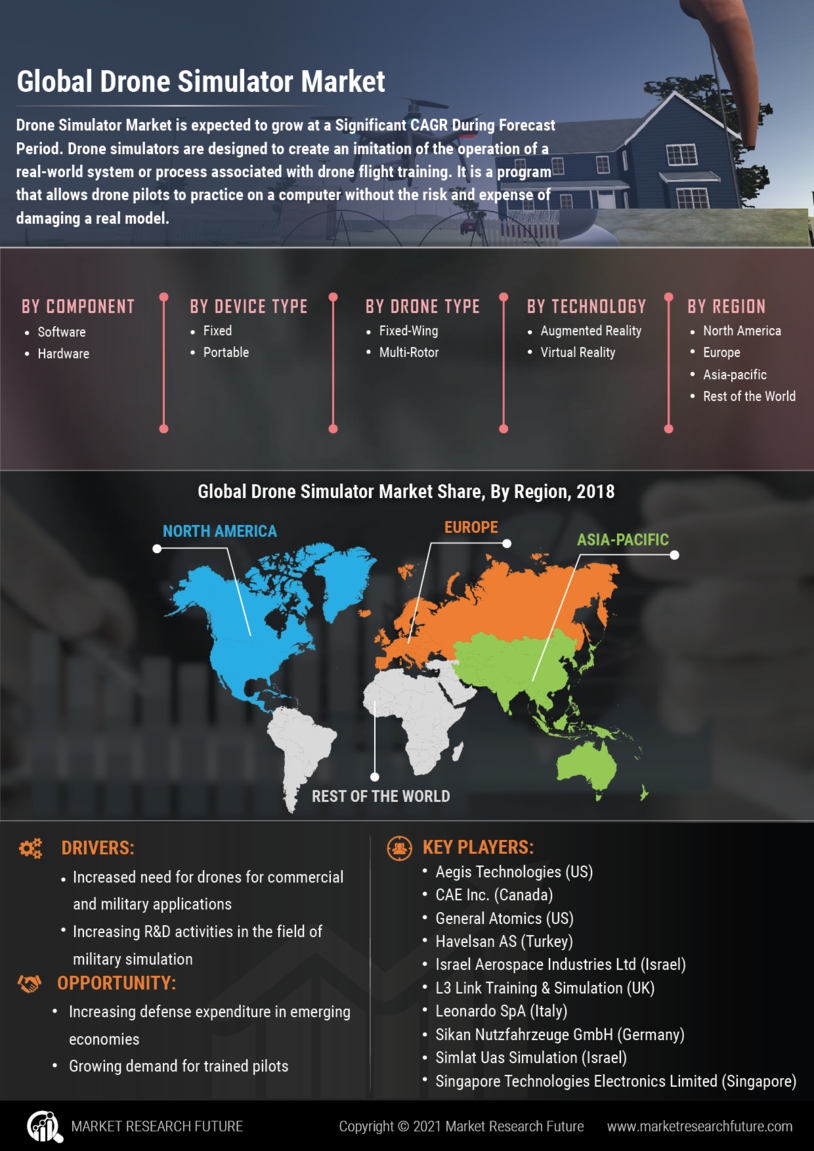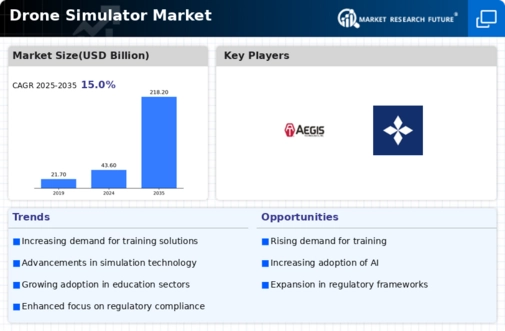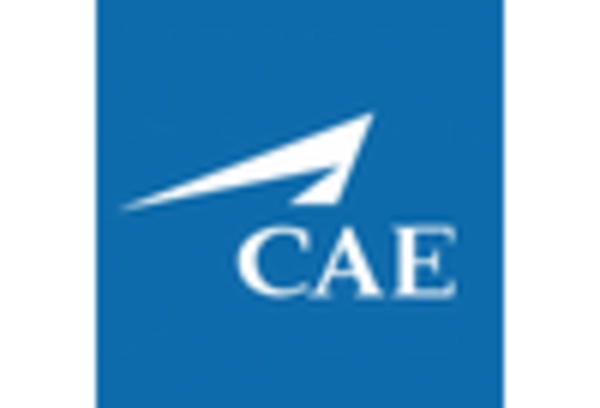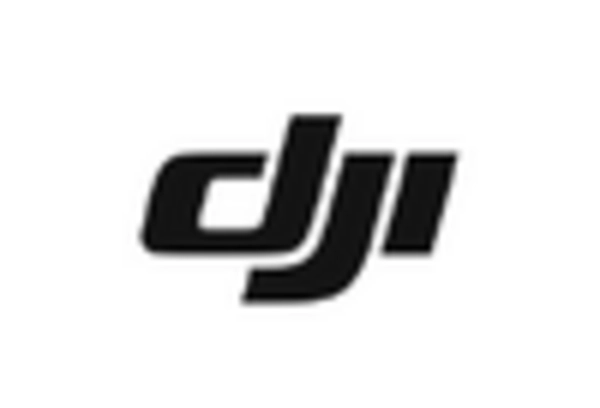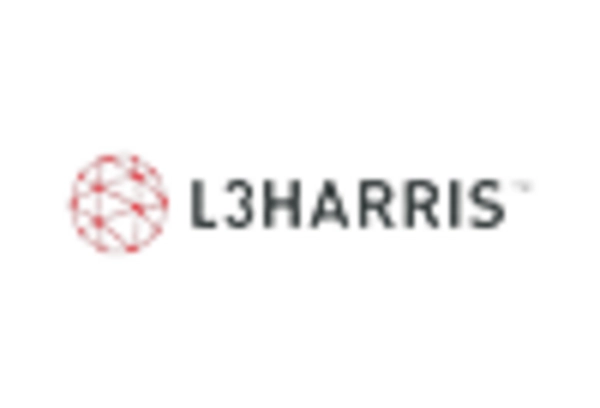Market Growth Projections
The Global drone simulator Market Industry is poised for remarkable growth, with projections indicating a market value of 43.6 USD Billion in 2024 and an anticipated increase to 218.2 USD Billion by 2035. This growth trajectory reflects a compound annual growth rate of 15.76% from 2025 to 2035, driven by factors such as technological advancements, regulatory compliance, and the rise of commercial applications. The increasing recognition of the importance of simulation in training and operational efficiency further underscores the market's potential. As industries continue to integrate drone technology, the demand for sophisticated simulators is expected to rise significantly.
Growing Demand for Pilot Training
The Global Drone Simulator Market Industry experiences a notable surge in demand for pilot training solutions. As the aviation sector increasingly embraces drone technology, the need for skilled operators becomes paramount. Simulators provide a safe and controlled environment for training, allowing pilots to hone their skills without the risks associated with real-world flying. This trend is reflected in the market's projected growth, with an estimated value of 43.6 USD Billion in 2024, indicating a robust interest in training solutions. The emphasis on regulatory compliance and safety further drives this demand, as operators seek to meet stringent industry standards.
Advancements in Simulation Technology
Technological advancements play a crucial role in shaping the Global Drone Simulator Market Industry. Innovations in virtual reality, augmented reality, and artificial intelligence enhance the realism and effectiveness of drone simulators. These technologies allow users to experience complex flight scenarios and environmental conditions, improving their decision-making skills. As a result, the market is expected to grow significantly, with projections indicating a value of 218.2 USD Billion by 2035. The integration of sophisticated software and hardware solutions into simulators not only enhances training efficiency but also attracts a wider audience, including military and commercial sectors.
Rise of Commercial Drone Applications
The expansion of commercial drone applications is a key driver of the Global Drone Simulator Market Industry. Industries such as agriculture, logistics, and construction increasingly adopt drones for various tasks, creating a demand for skilled operators. Simulators provide an efficient means of training personnel to operate drones in these diverse environments. As the market evolves, the projected compound annual growth rate of 15.76% from 2025 to 2035 highlights the growing recognition of the value of simulation in preparing operators for commercial applications. This trend indicates a shift towards integrating drone technology into everyday business operations.
Increased Investment in Drone Technology
Investment in drone technology is a significant factor propelling the Global Drone Simulator Market Industry. As businesses and governments recognize the potential of drones for enhancing operational efficiency, funding for research and development in simulation technology has increased. This influx of capital supports the creation of advanced simulators that cater to various sectors, including defense, agriculture, and emergency services. The anticipated growth trajectory, with the market expected to reach 218.2 USD Billion by 2035, suggests that stakeholders are increasingly prioritizing simulation as a critical component of drone technology development.
Regulatory Compliance and Safety Standards
The Global Drone Simulator Market Industry is significantly influenced by the increasing emphasis on regulatory compliance and safety standards. Governments worldwide are establishing stringent regulations for drone operations, necessitating comprehensive training for operators. Simulators serve as an effective tool for ensuring that pilots are well-versed in these regulations and can operate drones safely. This regulatory landscape is likely to propel market growth, as organizations invest in simulator technology to meet compliance requirements. The focus on safety and risk mitigation underscores the importance of simulation in preparing operators for real-world challenges.
